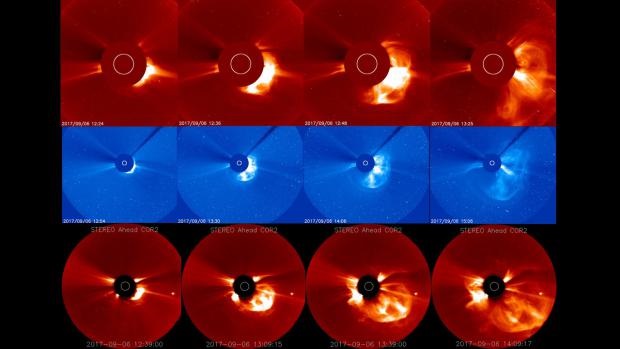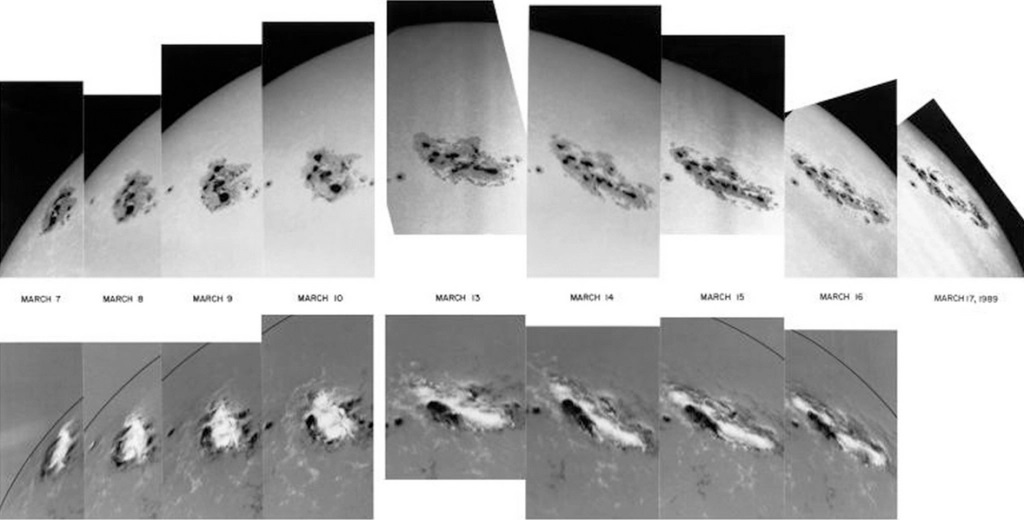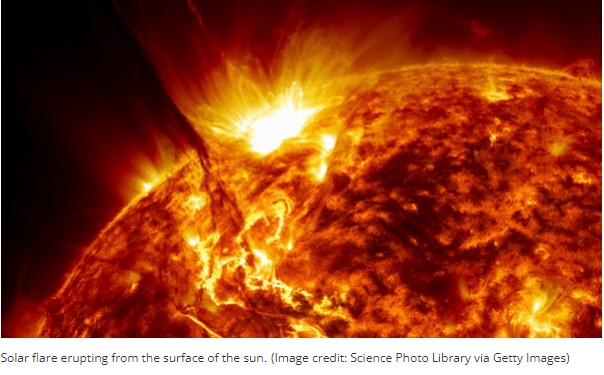
Allegations that there will be supersonic explosions in the Sun within four months and that all electronic devices in the world may be damaged due to these explosions have been brought up.
But what do supersonic explosions on the Sun mean, and can these explosions really cause electronic devices to malfunction?
Faktyoxla Lab. has conducted an investigation on the issue with reference to foreign media.
The Sun periodically releases its stored energy in a burst of plasma known as a Coronal Mass Ejection (CME). With coronal mass ejections, the sun ejects large amounts of plasma and magnetic fields from its atmosphere.

Another similar phenomenon occurs in the Sun. This event, known as a solar flare, is a powerful explosion on the sun. According to NASA, these explosions have energy equal to one billion hydrogen bombs. These explosions are also called solar storms.
The main difference between the two events is that coronal mass explosions take about three days to reach Earth, while solar flares reach Earth in just over 8 minutes.
So could these solar flares affect the electrical system? Yes. But one thing to note: As mentioned on social media and news sites, predictions like the whole world going dark and power systems going completely out of order do not reflect reality. It is thought that the problems to be experienced will be of a smaller scale.
In other words, it is known that these solar flares can significantly change the Earth's magnetic field, and particles that reach the Earth can cause electrical grid failures. But these explosions are more likely to affect GPS (navigational signals) and pose a risk to spacecraft and astronauts. Some scientists say there could be negative effects on rail networks as well.
According to expert Mert Bakirci, solar storms do not threaten life on earth as long as they do not reach catastrophic or destructive dimensions. It cannot even affect the power grid or personal computers. (reference)
In addition, the northern lights, a natural phenomenon that many people want to see, are caused by coronal mass ejections and solar flares. This phenomenon occurs mostly in northern or southern latitudes such as Norway and Canada. That is why engineers and scientists in this region are preparing electrical grids for geomagnetic storms.

Although solar storms occur frequently, it is not unusual for the effects of these storms to be reflected back to Earth. However, there is the case of Carrington where the opposite happened and the electrical and infrastructure systems were destroyed by a solar storm.

The Carrington event, which occurred in September 1859, is known as the largest solar storm event in history. In August 1859, astronomers from all over the world discovered and observed an increase in the number of sunspots. Among these astronomers was Richard Carrington, who gave the solar storm its name.
The coronal mass ejection particles produced by this storm traveled more than 150 million kilometers to reach Earth. With this incident, the electric current paralyzed the telegraph systems.
This may seem like a very old incident, but there is another similar incident that took place in more recent history. On March 13, 1989, a solar storm caused a 12-hour power outage throughout the Canadian province of Quebec.

Although coronal mass ejections have occurred on the Sun since then, they have not reached a level that would affect Earth. Because now there are more advanced infrastructure systems compared to the technology of 1859 and 1989.
But why have these claims now emerged?
The solar activity has increased lately. Of course, there is a reason for this. It is known that the Sun is currently in an active phase. Every 11 years, the Sun completes its calm or fairly stormy cycle. The Sun entered its 25th cycle in 2019.
During the stormy period on the Sun, sunspots and explosions increase, and this period is called "solar maximum". Periods when sunspots are almost non-existent are called "solar minimum". NASA's December 2, 2023 image of the Sun shows a small solar storm. However, this storm that reached the Earth did not cause any concern.

According to NASA, the Sun has been in an active period for some time. Scientists say that by 2025, when the maximum phase of the sun reaches its peak, the number of spots on the Sun could increase to 115. But there is an important situation: the number of spots on the Sun has already exceeded 115. So, the expected risk may come before 2025.
NASA often shares sunspots and explosions on its official social media account and website. Finally, a December 10, 2023 post reported solar flares, 30 crown mass ejections and a geomagnetic storm.
Conclusion:
- Solar storms occasionally occur on the Sun, such as coronal mass ejections and solar flares;
- Coronal mass explosions take about three days to reach Earth, while solar flares take just over eight minutes to reach Earth;
- It is thought that the Sun will experience the "solar maximum" by 2025;
- However, predictions that our planet will be plunged into darkness and electrical systems will be completely destroyed do not reflect reality. It is thought that the problems to be experienced will be small-scale.




















